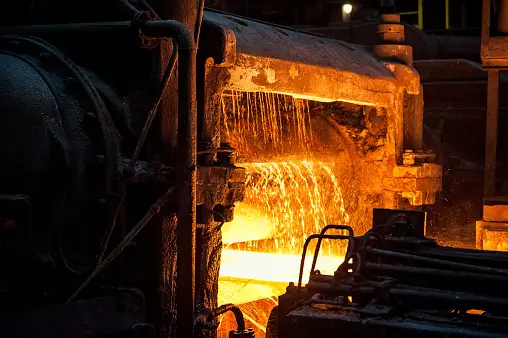
How a Roller Leveler Improves Material Flatness in Production Lines
In the high-stakes world of modern manufacturing, precision is not just a goal—it's a prerequisite. From the automotive chassis to the delicate components of consumer electronics, the quality of the final product is intrinsically linked to the quality of the raw materials. One of the most critical material properties is flatness. Wavy, buckled, or distorted metal sheets can cause catastrophic production downtime, poor weld quality, and rejected parts. This is where an unsung hero of the production line comes into play: the roller leveler.
At XINLIJIN, we specialize in engineering high-performance roller levelers that are the cornerstone of flatness-critical operations. But how exactly does this powerful machine transform imperfect metal into perfectly flat, production-ready material? Let's dive into the science and mechanics behind this essential process.
Understanding the Problem: Why Materials Aren't Flat
To appreciate the solution, we must first understand the problem. Sheet metal and other flat materials acquire internal stresses and imperfections during their previous manufacturing stages, such as:
-
Rolling Mills: The process of rolling metal to a specific thickness can create a wavy edge or a buckled center.
-
Slitting and Shearing: Cutting operations relieve internal stresses, causing the material to twist or bow.
-
Heat Treatment: Thermal processes can warp and distort metal due to uneven cooling.
These imperfections are not just cosmetic. They prevent proper nesting in CNC machines, cause misfeeds in stamping presses, and lead to gaps in welded assemblies. A roller leveler systematically eliminates these flaws.
The Core Principle: Applying Controlled Stress to Eliminate Internal Stress
A roller leveler works on a fundamental principle of material science: to eliminate uncontrolled, internal stress, you must apply a controlled, external stress that exceeds the material's yield point.
Think of a paper clip. If you bend it slightly, it springs back to its original shape—this is the elastic limit. If you bend it further, it permanently stays in the new shape—this is the plastic deformation zone. A roller leveler does this on a microscopic scale, repeatedly bending the material back and forth to permanently remove its "memory" of being uneven.
A Step-by-Step Breakdown of the Roller Leveling Process
A typical roller leveler, like those built by XINLIJIN, consists of two sets of precision-ground work rolls arranged in an offset pattern.
-
Entry and Initial Contact: The uneven sheet metal enters the machine and passes between the first set of upper and lower rolls. The upper rolls are adjusted to penetrate slightly deeper into the material's peaks.
-
The "Bending and Stretching" Action: As the material progresses, each subsequent pair of rolls applies a reverse bend. The high points (peaks of the waves) are stretched more than the low points (valleys). This alternating bending action—up, down, up, down—subjects the entire cross-section of the material to plastic deformation.
-
Eliminating the "Memory": With each pass between the rolls, the material's grain structure is realigned. The internal stresses that caused the waviness or bowing are neutralized and redistributed evenly. The material effectively "forgets" its distorted shape.
-
Exit and Result: By the time the sheet exits the final set of rolls, it has undergone hundreds of these micro-bends. The result is a perfectly flat, stable, and stress-relieved sheet of metal ready for the next stage of production.
Key Factors That Dictate Leveling Quality
Not all roller levelers are created equal. The quality of leveling depends on several engineering factors:
-
Number of Rolls: More work rolls provide a greater number of bending points, allowing for finer control and better leveling of thinner or high-strength materials.
-
Roll Diameter and Spacing: Smaller diameter rolls, placed closer together, can apply a tighter bend radius, which is crucial for leveling thin gauge materials.
-
Adjustability: Modern CNC leveling machines allow for precise, independent adjustment of each upper roll. This lets operators target specific imperfections like center buckle or edge wave with pinpoint accuracy.
-
Machine Rigidity: A robust, heavy-duty frame, like those on XINLIJIN levelers, prevents frame deflection under load, ensuring consistent flatness across the entire sheet width.
The Tangible Benefits: Why Your Production Line Needs a Roller Leveler
Integrating a roller leveler into your production line is an investment that pays for itself through:
-
Elimination of Production Downtime: No more jams, misfeeds, or crashes in presses, laser cutters, or robotic welders.
-
Superior Product Quality: Flawless flatness leads to better-fitting parts, higher-quality welds and finishes, and a more professional end product.
-
Increased Automation Compatibility: Perfectly flat material is essential for reliable operation in automated feeding systems and robotic cells.
-
Reduced Material Waste: Drastically lower rejection rates of finished parts due to material imperfections.
-
Enhanced Process Efficiency: A leveler prepares material for subsequent steps, making the entire production line smoother, faster, and more profitable.
Conclusion: The Foundation of Flawless Manufacturing
A roller leveler is far more than just a machine that flattens metal. It is a critical process-enabler that ensures consistency, quality, and efficiency from the very start of the production cycle. By understanding and leveraging the precise mechanics of roller leveling, manufacturers can unlock new levels of precision and profitability.
For many years, XINLIJIN has been at the forefront of leveling technology, providing robust and reliable roller levelers, plate leveling machines, and CNC precision leveling systems to industries worldwide. If you are ready to eliminate flatness issues and optimize your production line, contact our experts today to find the perfect leveling solution for your needs.


















































